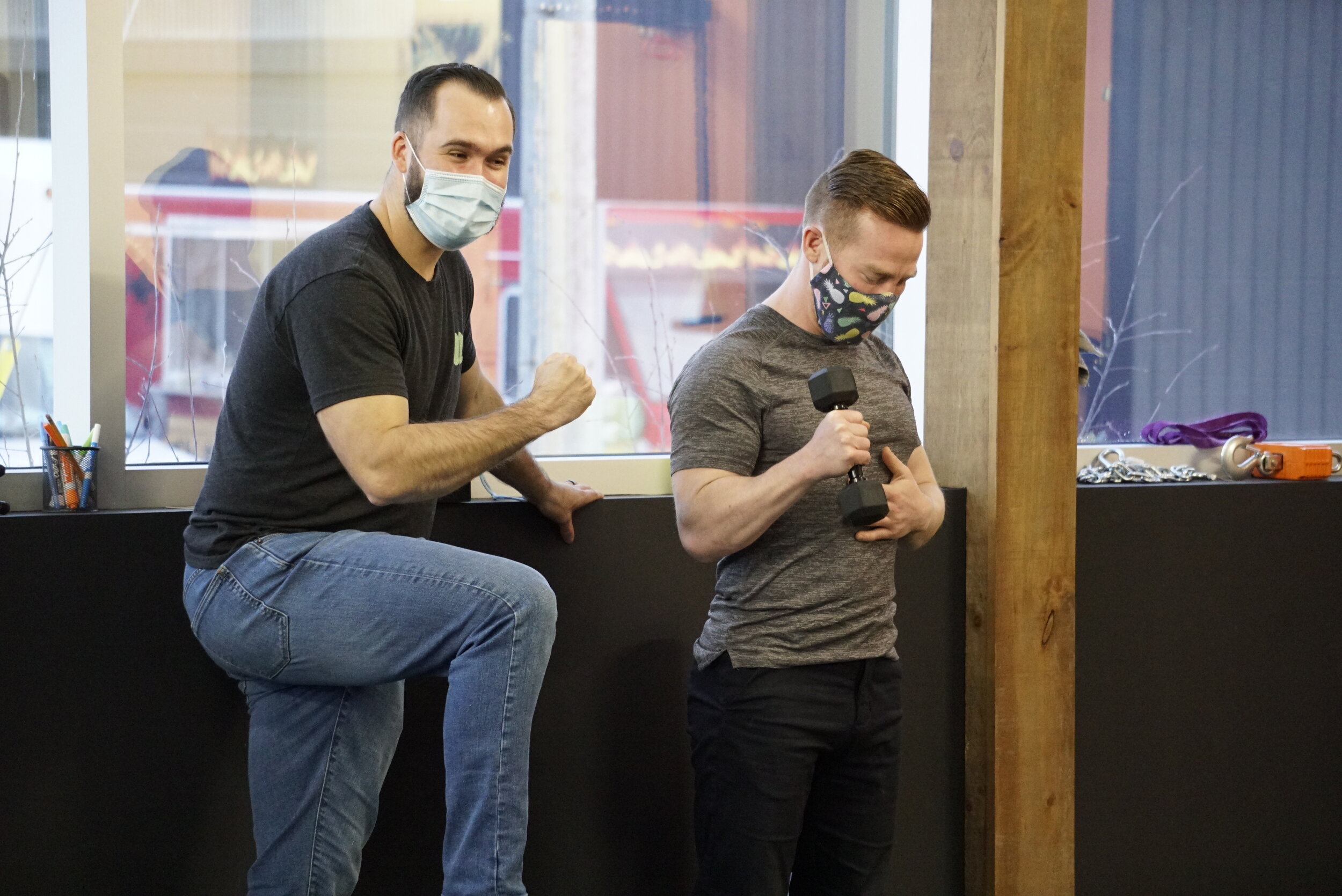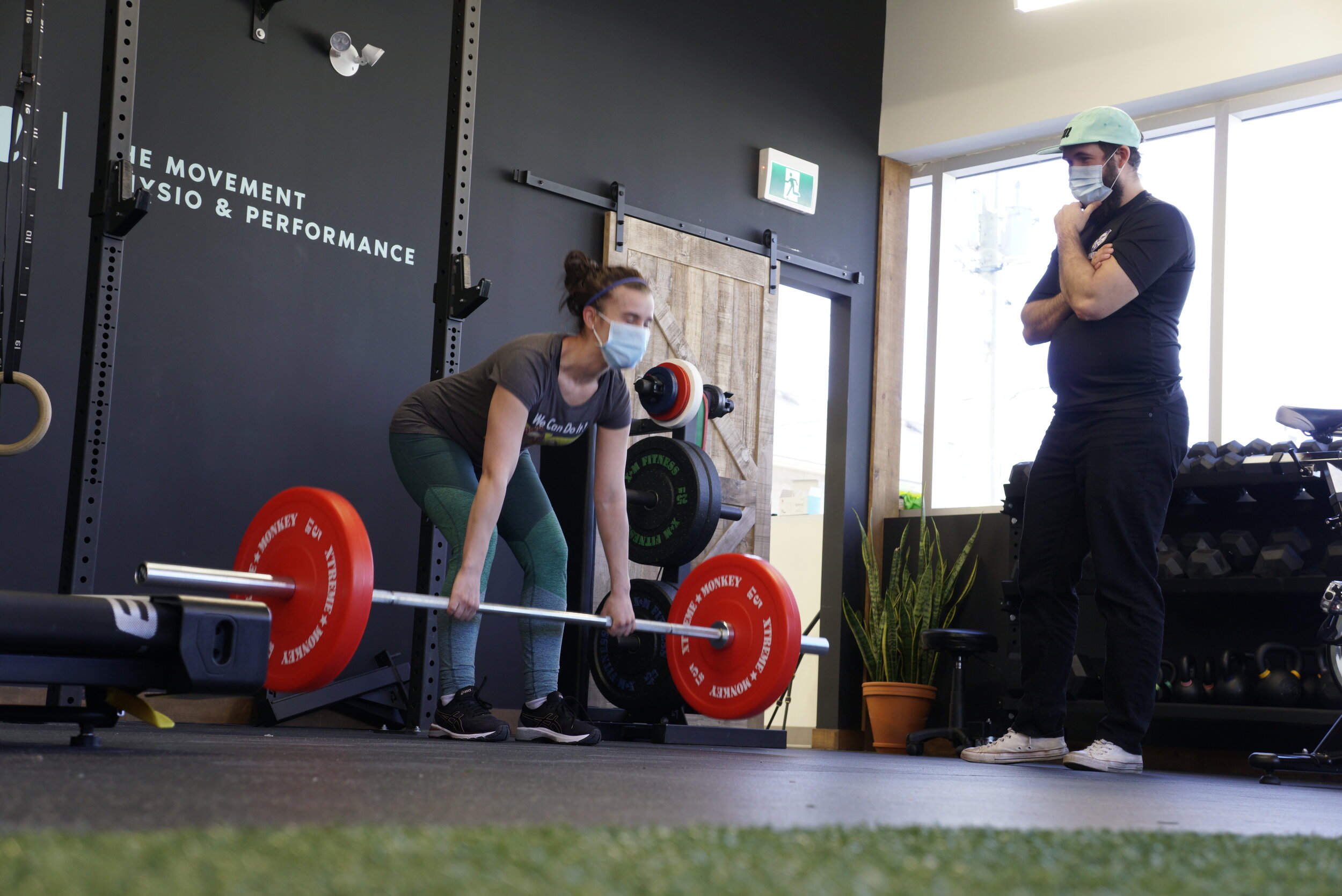A Story About Why Active Problems Require Active Solutions.
Client ‘X’, we’ll call her Jane, was an experienced runner who was dealing with pain in the back of her thigh. This had been going on for months and was at the point where she was having difficulty walking let alone running. Like many of our other clients, she was confused and frustrated. Confused because she was trying to address the problem by seeing a physiotherapist and frustrated because she wasn’t able to do what she loved. She had been following us on instagram, attending our webinars/workshops, and noticing that we were preaching a different approach. Enough was enough and she came to see one of our physiotherapists for an assessment. Like many of our clients, Jane was incredibly motivated to get back to what she loved and wasn’t afraid to work hard. The issue wasn’t motivation, effort, or desire, the issue was a lack of an effective, targeted plan. Namely, Jane was missing an active plan, and we have a saying here at The Movement…
“Active problems require active solutions”
At the prior physiotherapy clinic, this client was getting every ‘treatment’ available ranging from e-stim to acupuncture to manual therapy. If you noticed a common theme, so did our physiotherapist - all of those treatments were passive in nature. This is a common theme that we see, many people see a physiotherapist who is doing treatments to them instead of with them. Essentially, Jane would feel better at her sessions but as soon as she went to try and run again the pain would return and she’d fall deeper and deeper into this cycle as her function reduced. We call this yoyo rehab, you feel good and then you get active again and you feel bad again and so on and so on.
Here’s how Jane got back to running again
Initially, our physiotherapist ruled out anything that would change the trajectory of rehab or warrant further imaging etc. Next, checked to see what the issue was and in this case it was an unhappy hamstring tendon. The reason this was important is because it helped us predict what types of forces could trigger Jane’s pain and also helped guide the approach with respect to exercise selection. When you come to The Movement and you’re a runner, running is your rehab. When you come to The Movement and you’re a powerlifter, powerlifting is your rehab and so on. In Jane’s case, this first thing we needed to do was modify her training so that her symptoms were under her control. This involved walk runs with monitoring of her symptom levels during, after, and from run to run. Beyond this, specific exercises were progressively programmed to target the hamstring tendon and build tolerance to loading. This can seem counterintuitive, and many of our clients including Jane initially believe you should avoid loading an area that’s painful. In some cases this is true and that’s why it’s important to have a thorough assessment and clear differential diagnosis. However, in many cases such as this one lack of stimulus can actually lead to greater intolerance and more pain. So fast forward a few months and voila, Jane was back to running 10km with no issues.
Here’s the reality
Along those few months there were ups and downs, flare ups, and it wasn’t easy. However, instead of yoyo’ing, Jane was able to consistently trend in the directly of a less sensitive tendon and more ability to run. This is not the easy way, but this is the way (bonus points if you get the reference). It was not easy for Jane BUT I think we speak for her when we say she wouldn’t change a thing…AND we acknowledge that it takes courage to invest in an approach like this and we’d like to make a special shoutout…

















